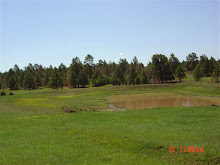Louisiana Gulf Rig Spewing 1,000 Barrels (42,000 gallons) of Oil per Day
Here's an article that actually acknowledges the environmental devastation that is occurring.
NEW ORLEANS, Louisiana – Robotic submarines are on Monday racing to stop oil from a sunken rig streaming into the Gulf of Mexico, as BP warned that sealing the seabed leaks could take three months if the operation fails.
Crude oil is spewing from a sunken oil rig in the Gulf of Mexico, leaving a massive slick covering an area of 400 square miles (1,035 square kilometers), officials said on Sunday.BP,(The British energy giant -- which leases the stricken Deepwater Horizon semi-submersible platform -- is desperately trying to prevent a massive slick from growing and spreading to Louisiana's ecologically fragile coast.
Satellite images on Sunday showed the slick had spread by 50 percent in a day to cover an area of 600 square miles (1,550 square kilometers), although officials said almost all the oil was just a thin veneer on the sea's surface.
BP has dispatched a flotilla of skimming vessels to mop up oil from the rig, which sank on Thursday while still ablaze, almost two days after a massive explosion that left 11 workers missing and presumed dead.
The crucial operations, though, are being conducted by four underwater vehicles almost a mile below on the seabed, where the riser that connects the wellhead to the rig is spewing out an estimated 42,000 gallons of oil a day.
"Those operations are ongoing. I know they have been working overnight but I don't know the progress that has been made," Bill Salvin, a spokesman at the joint information center set up to deal with the spill, told AFP.
Experts say that using the robotic vehicles to activate the blowout preventer -- a giant 450-tonne, 50-foot high machine near the wellhead that could effectively cap the well -- is a longshot.
"It has not been done before, but we have the world's best experts working to make it happen," admitted BP executive Doug Suttles.
Richard Metcalf, a mechanical engineer at the pro-industry Mid-Continent Oil & Gas Association told AFP: "Essentially, they're trying to put a cork in a bottle of champagne."
Aware that the effort could well fail, BP is also preparing to drill relief wells that would permanently shut off the oil flow by injecting a special sealant into the wellhead -- but this would take much longer.
"It is possible that it could take two to three months for a relief well to be drilled," said Salvin, adding that a "worst case scenario" could see them "lose total control of the well" and oil leaking at a much quicker rate.
The spokesman told AFP that it should be clear by Tuesday morning if the remotely-operated submarines would be able to activate the blowout preventer and stop the two leaks in the riser.
The US coast guard, which conducted two overflights of the slick on Saturday and Sunday to assess the extent of the pollution, have described it as a "very serious spill."
Five aircraft and 32 spill response vessels -- skimmers, tugs, barges and recovery boats -- have been trying to mop up the slick but efforts were hampered over the weekend by winds and high seas.
So far, the slick is not threatening the coast of Louisiana, more than 40 miles away, where it could endanger ecologically fragile wetlands that are a paradise for rare waterfowl and other wildlife.
"In the trajectory analysis we don't see any impact to any shoreline within the next three days," Charlie Henry, scientific support coordinator of the US government's National Oceanic and Atmospheric Administration (NOAA), told journalists on Sunday.
Environmentalists have sounded the alarm about the threat to Louisiana and experts say the spill has the potential to be the worst seen in the United States since the 1989 Exxon Valdez oil tanker disaster.
That spill, considered one of the worst-ever man-made disasters, poured nearly 11 million gallons of crude into Alaska's Prince William Sound, devastating some 750 miles of its once pristine shores. More>>>






0 comments:
Post a Comment